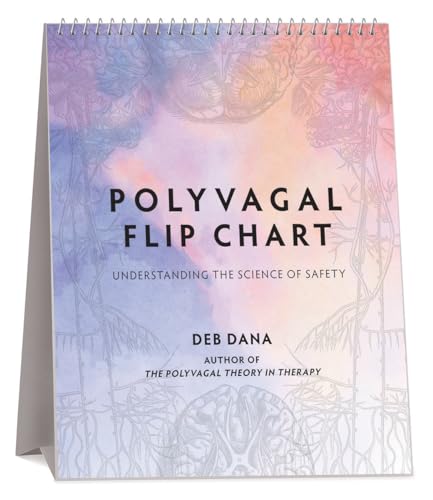Polyvagal Flip Chart
Understanding the Science of Safety (Norton Series on Interpersonal Neurobiology)
Deb Dana
BOOK REVIEW

In a world often characterized by chaos and emotional upheaval, Polyvagal Flip Chart: Understanding the Science of Safety by Deb Dana emerges as a lifeline, offering a profound exploration of the interconnectedness of our nervous system and the sense of safety. This 20-page compendium is not just a technical guide; it's a gateway to understanding the visceral reactions that shape our daily interactions and emotional landscapes.
Imagine confronting the raw fear and vulnerability that comes when our bodies react to stress. It's a primal instinct, a survival mechanism built into our DNA. Dana deftly unpacks the Polyvagal Theory, devised by Dr. Stephen Porges, to illuminate how our autonomic nervous system-comprising the sympathetic and parasympathetic systems-dictates our emotional responses to the world around us. The theory posits that the way we perceive safety profoundly influences our social engagement, emotional well-being, and even our physiological health.
Readers are more than just passive observers here; they are invited into the heart of the matter. Dana's work transcends dry science, beckoning us to feel the pulse of our emotional responses through captivating visuals and simple yet impactful narratives. You might find your heart racing as you learn how a single conversation can determine whether you operate from a place of connection or fear.
Reactions to this work are as varied as the humans it seeks to illuminate. Some praise it for being an accessible entry point into the complex realm of interpersonal neurobiology, appreciating its rich metaphors and fluid explanations. Others, however, express frustration, yearning for deeper explorations of the underlying neuroscience without sacrificing clarity. This kind of discourse enriches the book's legacy, revealing the powerful conversations it ignites about mental health, trauma, and recovery.
Let's talk about the emotional weight behind these ideas. Dana doesn't merely explain; she encourages a radical shift in perspective-inviting you to re-examine the very fabric of safety in your life. By harnessing the potential of the vagus nerve, a conduit between body and mind, we come closer to understanding how we can cultivate resilience. This book is a testament to the idea that safety isn't just a state of being; it's an interactive experience shaped by our environments and relationships.
In the wake of global anxieties-think pandemics, social unrest, or a climate in chaos-Dana's work resonates with an urgency that taps into our collective consciousness. The Polyvagal Flip Chart advocates not just individual healing but social harmony by emphasizing our need for safe connections. As you engage with this work, consider how your own life reflects the principles outlined here. Are you thriving in connections, or caught in a cycle of survival responses?
So many have found refuge in these pages, sparking dialogues among therapists, caregivers, and those who seek understanding in their emotional journeys. This book has found its way into the hands of clinicians and family members alike, creating ripples of change that challenge our perceptions of trauma and recovery. The feedback from readers reads like testimonials to a shift in understanding-this is beyond mere reading; it is a transformation.
Ultimately, Polyvagal Flip Chart is more than a chart; it's a movement. It's about realizing that safety is a communal experience, an invitation to engage, connect, and heal. If you allow it, this book will compel you to revisit how your body communicates with your mind and the world around you. Challenge yourself to dive deep into this work-an enthralling exploration that resonates long after the final page is turned. Don't just read it; live it. Your journey toward understanding safety starts here. 🌟
📖 Polyvagal Flip Chart: Understanding the Science of Safety (Norton Series on Interpersonal Neurobiology)
✍ by Deb Dana
🧾 20 pages
2020
#polyvagal #flip #chart #understanding #science #safety #norton #series #interpersonal #neurobiology #dana #DebDana